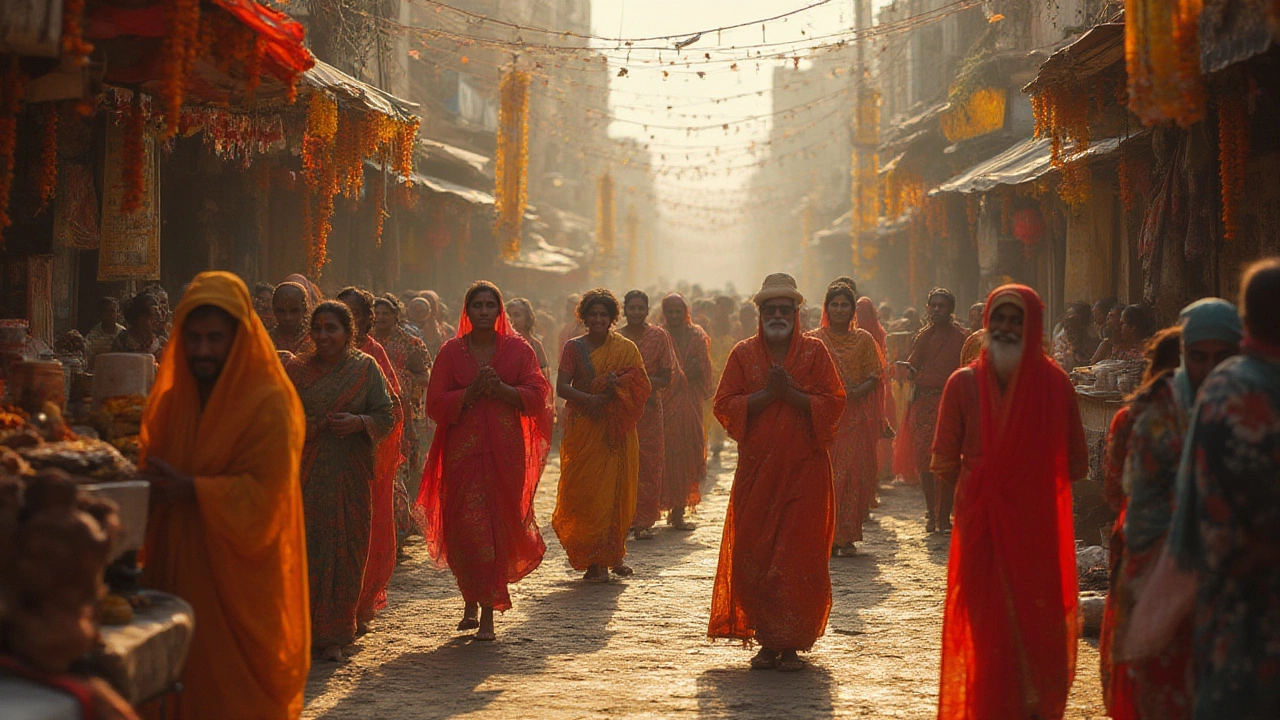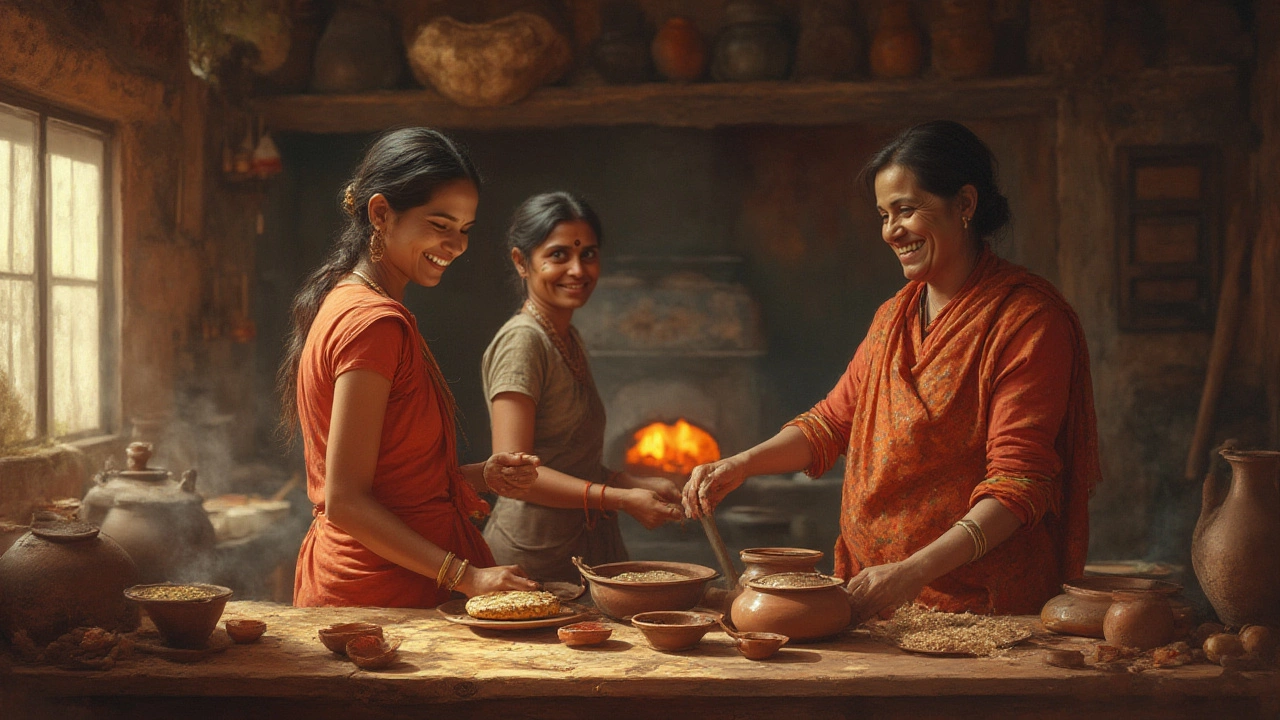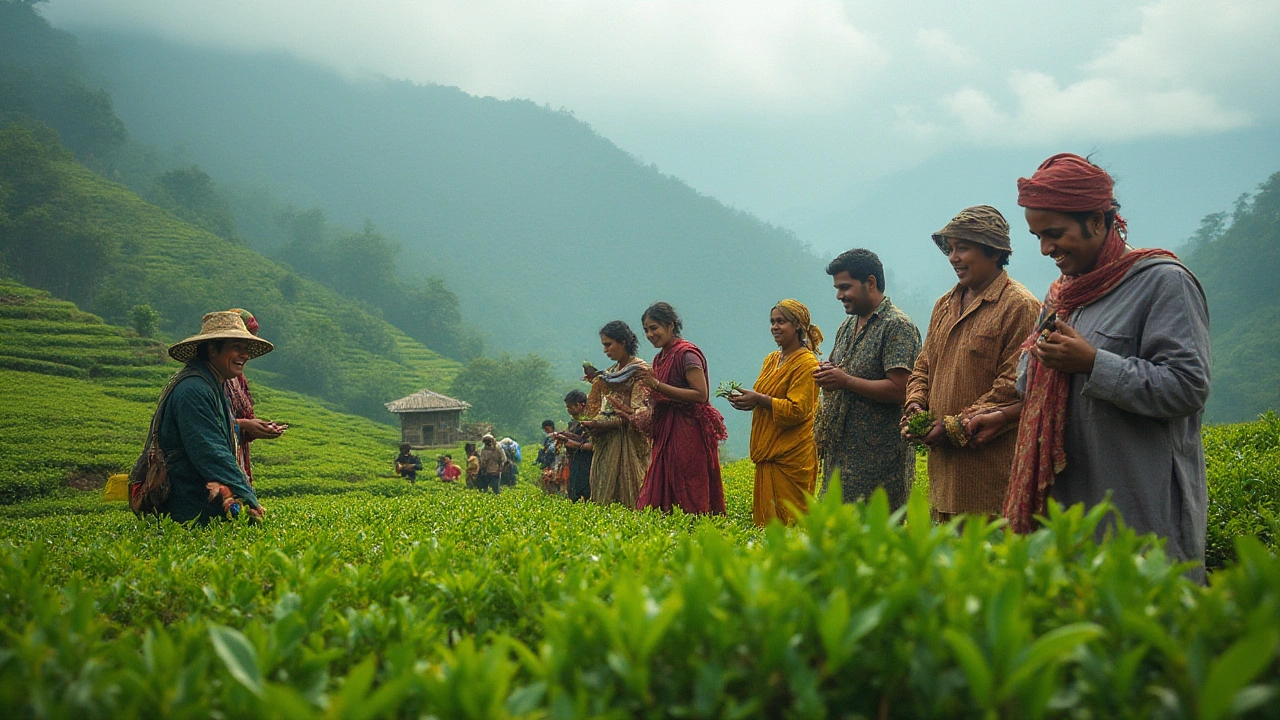Best Destinations for Authentic Cultural Experiences Around the World
 Jul, 30 2025
Jul, 30 2025
Imagine sipping mint tea with Berber nomads under Moroccan stars, or learning to make pasta from a spirited nonna in a Tuscan village. Chasing the best cultural experiences isn’t about ticking off postcard spots—it’s about slipping into the daily rhythm of a place, letting its sounds, tastes, and quirks sweep you in. Some people will tell you culture is about museums and monuments. Sure, those matter, but the deeper magic is in street corners, community festivals, markets, and family kitchens. If you’re hungry for travel that leaves you changed, keep your passport handy. This isn’t your average list of ‘go here, snap this.’ This is a map for travelers who want to feel part of the story.
What Makes a Place Culturally Rich?
You know that feeling when you wander a city at dusk and everything—the smell of food in the air, the chatter of locals, the echoes of music—feels utterly new? That’s cultural richness. Some places pulse with centuries-old traditions, religious rituals, art, and language, colliding in daily life. But what gives them that extra spark?
Language diversity matters—a place where multiple languages survive side-by-side tends to have layered history. Take India, with over 20 official languages and hundreds more dialects. Or Papua New Guinea, home to over 800 languages (crazy, right?). Where cultures have mingled—via trade, migration, or colonial history—you’ll often find the best food, music, and festivals. Think Istanbul, that legendary crossroads between Asia and Europe, where you can eat both pide and baklava, and hear the call to prayer over Byzantine ruins. Or New Orleans, where you can hear French, Spanish, English, and Creole poured into jazz at a corner bar.
Festivals are a dead giveaway. A place with strong, colorful festivals (and not just ones set up for tourists) probably hangs onto its traditions tight. Japan’s Gion Matsuri, Mexico’s Día de los Muertos, or Ethiopia’s Timkat—they all invite visitors right into the heart of their community. Another marker? Markets. Give me a night market in Chiang Mai, Bangkok, or Marrakech over a mall any day. Markets are where old ladies sell secret spice blends, teenagers skateboard between stalls, and everyone negotiates with a smile or a frown—they’re the pulse of daily life.
Then there’s food. If a place treats cooking like an art and family act, you can bet culture runs deep. French boulangeries, Vietnamese pho stands, Peruvian cevicherias—they all tell stories you won’t find in textbooks. And don’t forget music. From soulful fado echoing in a Lisbon alley to the hypnotic Gnaoua in Essaouira, sound is as much a part of a place’s heritage as stone or paint.
All these layers add up. Choose destinations where traditions aren’t just relics but part of everyday routines. Ask yourself: Is there a daily street parade? Are people gathering for prayer, dance, or meals in public spaces? Do kids grow up speaking their ancestors’ tongue? If yes, you’re in the right spot for culture.

Top Countries and Cities for Genuine Cultural Immersion
Now, where do you actually go to soak up all this richness? Here’s the thing: every country has its own cultural heartbeat, but some come on louder—or just make it easier for outsiders to join the rhythm. Let’s check out a few standout destinations, those that pack a big punch when it comes to immersive experiences.
First up: Japan. From cherry blossom walks to Shinto shrines and sushi counters, Japan blends precision, beauty, and quirk. Kyoto hits you with ancient temples, tea ceremonies, and kimono-clad locals, but even Tokyo surprises with hidden sumo training stables and tiny izakayas. Want the full experience? Try a homestay in a rural farm village. You’ll pick vegetables, cook together, and watch traditional Noh theater brought to life in community halls.
Next, Morocco. Here, the medinas of Fes and Marrakech are living museums. You step through a city gate and feel centuries peel back: artisans hammering brass, carpets drying on rooftops, gnawa music drifting down labyrinthine streets. Ask for mint tea—it’s a social ceremony as much as a drink. Berber villages in the Atlas mountains open their doors to travelers willing to skip five-star hotels and embrace a simpler, more communal life. Go during a festival, like Eid or the Marrakech Popular Arts Festival, to see the country at its most vibrant.
India is impossible to ignore. Each region feels like its own country: bustling Mumbai, spiritual Varanasi, the sun-soaked sprawl of Kerala. The festivals are legendary—Holi, Diwali, Pushkar Camel Fair. Local markets overflow with fabric, fruit, and a thousand varieties of street food. Join a cooking class in Delhi, or take part in a traditional wedding if you get the chance (they’re happy to invite guests!). For pure immersion, stay in a family’s home instead of a hotel; you’ll learn more in a day than a library could teach you.
How about Mexico? In Mexico City, ancient Aztec pyramids share neighborhoods with hip art galleries and food trucks. Oaxaca is a hotspot for indigenous traditions: every alley, every kitchen, every market brims with color. Take a weaving workshop with Zapotec elders, or head to a Day of the Dead celebration and watch how life and memory mingle.
Can’t leave out Italy. Yes, there are tourists. But skip Rome and Venice for smaller towns like Matera, Orvieto, or Lecce. There, you’ll chat with locals at the piazza, learn folk dances, help with the olive harvest, and understand why food is a serious business. Family tables fill up at midday and dinner might last three hours—with stories, jokes, and maybe the best wine you’ll ever taste.
If you want something less traveled, consider Ethiopia. Its Orthodox Christian festivals are wild with color: priests, ancient manuscripts, chants, and incense. Lalibela’s rock-hewn churches draw pilgrims from everywhere. You can trek through the Simien Mountains and sleep in tiny huts, or feast on injera and spicy wat with village families.
Let’s lay out some helpful info. Here’s a quick cultural tourism table to compare a few destinations on their immersion opportunities:
| Country | Languages Spoken | Key Festival | Unique Cultural Tip |
|---|---|---|---|
| Japan | Japanese | Gion Matsuri | Stay in a ryokan; learn the tea ceremony |
| Morocco | Arabic, Berber, French | Eid al-Fitr, Gnaoua Festival | Visit a hammam; take a cooking lesson in the souk |
| India | 22+ official languages | Holi, Diwali | Attend a local wedding; join spiritual rituals on the Ganges |
| Mexico | Spanish, Indigenous | Day of the Dead | Learn tortilla making; join village fiestas |
| Italy | Italian, Regional | Carnivale, Saint’s Days | Olive harvest; folk festivals in small towns |
| Ethiopia | Amharic, Oromo, Tigrinya | Timkat, Meskel | Trek with gelada monkeys; learn coffee ceremony |
These picks barely scratch the surface. The world’s packed with lesser-known spots: Georgia’s Tbilisi, where sulphur baths and feasts stretch for hours; Vietnam’s Hoi An, where lantern festivals paint riverside nights; New Zealand’s Rotorua, home to Māori language, haka dances, and hangi feasts roasted in earth ovens. Always ask locals for advice—they know the real hidden gems.

How to Dive Into Local Culture Without Feeling Like an Outsider
So, you’ve landed somewhere amazing, ready to catch that authentic culture—but how do you break past the glass wall between visitor and local life? It’s easier than you think, but you’ll have to ditch comfort zones and maybe feel awkward once or twice (it’s worth it, trust me).
First rule: learn a handful of local words. Even just “hello,” “thank you,” and “how are you?” in someone else’s language makes a huge difference. People love when travelers try, and it opens doors everywhere from corner shops to monasteries. Download an app or scribble phrases in your notebook. Next, eat where the locals eat. If you see a queue of taxi drivers or market workers, join it. Everyone wants to share their favorite dishes, stories, and maybe a round of drinks. Accept the invitation. Don’t just watch the festival from the sidelines—join the procession, help decorate, play a small part however you can.
Stay with locals whenever you can. Homestays, community lodges, even short Airbnb stays with chatty hosts do wonders. You’ll learn quirks—like how to slurp noodles just right in Vietnam, or why everyone claps for sunset in Santorini. Ask questions. People everywhere love explaining their traditions and stories, as long as you show respect. If you’re unsure, ask. If you’re uncomfortable, step back gently. But always approach with curiosity.
Want quick wins? Here are tips that work in pretty much any country:
- Visit markets early in the morning, before most tourists arrive. Watch as the town wakes up.
- Take part in a local workshop—cooking, crafts, dance, drumming. Hands-on always trumps just watching.
- Observe religious practices respectfully, even if you don’t join. Remove your shoes, cover your head, follow the crowd’s lead.
- Ride public transport at least once, even if it’s bumpy or crowded. You’ll meet regular people (and see how they handle chaos).
- Keep your phone handy for photos, but also put it away and savor the moment. Some of the best stories are never Instagrammed.
- Don’t insist on “home comforts.” Try local breakfasts, dress code, and daily routines. Adapt, don’t expect the world to adapt for you.
The biggest barrier is often fear—of looking foolish or getting something wrong. Fact is, locals everywhere appreciate effort and humility. Mess up a phrase, laugh about it, and most people will help you out, or even invite you to try again over coffee or tea. Remarkable travel moments happen when you let go of control, open up to surprise, and show genuine interest. Bring a small gift from your home country (chocolate, a postcard, a favorite tea) for your host; it always sparks conversation.
If you’re after true transformation, spend as much time as possible in one place. A week lets you skim the surface. A month gives you regular status at the bakery or bar, and suddenly you’re swapping recipes or local gossip. You’ll find that everywhere, from the grandest metropolis to the tiniest village, people share a love of music, laughter, food, and storytelling. These are the threads that bind us together—and make every trip unforgettable.